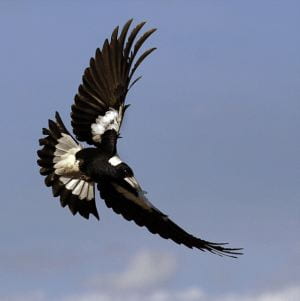
Magpie Swooping- an Australian Phenomenon
By Benjamin Saw, 2020 Alumni.
An Australian phenomenon, magpie swooping is a yearly occurrence, and it is back! Magpies predominantly target cyclists, but will also attack pedestrians, especially in suburban areas. From around August to November, the number of magpies swooping start to skyrocket, with most attacks happening during the month of September.
In 2018, Queensland racked up the highest number of attacks at 401 (about one third of Australia’s magpie attacks happened in Queensland), New South Wales was next up with 311 incidences, with Victoria coming in third place with 266 cases.
Magpie from Flickr
Why do magpies swoop from around August to November?
This time of the year is commonly referred to as swooping season. During this time, magpies build nests to raise their fledglings (chicks). Naturally, magpies will want to defend their nests from intruders.
Contrary to theories that magpies attack due to being territorial or being full of testosterone (and ANGER in male magpies), a study suggests that magpies attack humans to protect their offspring if they perceive the human as a potential predator.
That study finds that territoriality is an inappropriate explanation for magpie attacks during swooping season. The study reasons that the term ‘territoriality’ usually refers to interactions between the same species (magpies and other magpies). In addition, magpies are known to exhibit territorial behaviour throughout the year (to defend their territories from other magpies). If this logic is used, then magpies should be attacking humans all year round regardless of whether they are nesting, but that is not the case!
The same study finds that male testosterone levels peaked just before the number of attacks start rising (before swooping season), then dropped significantly during periods with the greatest number of attacks (during swooping season). In addition, there were no differences in testosterone levels between an aggressive magpie and a non-aggressive magpie. Hence, the theory that testosterone levels increase and cause magpies to swoop is disproved as a myth.
Are magpie attacks dangerous?
Yes, magpie attacks are dangerous. Although weighing only about 300 grams, a magpie divebombs you with speed whilst possessing razor-sharp beak and claws as weapons, and what’s more, most magpies swoop from behind you and bring with them an element of surprise. However, how dangerous an attack is depends on the type of swoop. If it swoops and make no physical contact, that is a warning to get out of its sight before it swoops again. Alternatively, a magpie could swoop from above or below and use its beak or claws to strike the head, causing bleeding. In the worst case, a magpie will strike the eye of its victim and render the victim blind for life.
Are there good ways of avoiding swooping?
No. There have been experiments carried out to find an appropriate method, but none are ideal as people have differing personal experiences. Unless an ideal method is found, most people can only stick to general ways to keep safe. During this period, one could temporarily start travelling in a group, avoiding magpie nesting areas, altering or finding new routes, and carrying an umbrella to provide cover (for pedestrians). Besides, it’s 2020! There’s a good chance that a proportion of people will not have to worry about magpies swooping on them for this year as they’ll be spending less time outdoors anyway!
Here’s a funny, old video clip you’ve probably seen. Just a reminder of how terrifying it can be if it happens to you :
Good luck and stay safe!
Categories
